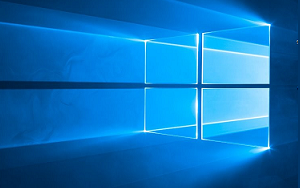Experiencing app crashes on your Android device can be frustrating. This comprehensive guide provides step-by-step instructions to troubleshoot and resolve these issues, ensuring smoother performance and enhanced user experience.
Understanding the Causes of App Crashes on Android
App crashes on Android devices can be caused by a variety of factors ranging from software bugs to hardware limitations. Understanding these causes is crucial for effective troubleshooting. Below are some common reasons why apps might crash on your Android device:
- Insufficient Memory: Lack of RAM can cause apps to crash as they cannot function properly without adequate resources.
- Software Bugs: Bugs in the app code can lead to unexpected behavior and crashes.
- Incompatible App Versions: Apps that are not updated to the latest version might not be compatible with the current Android OS.
- Corrupted App Data: Sometimes, the data stored by the app becomes corrupted, leading to crashes.
- Overloaded Processor: Running too many apps simultaneously can overload the processor, causing apps to crash.
Step-by-Step Guide to Fix App Crashes
Follow these detailed steps to troubleshoot and resolve app crashes on your Android device:
-
Restart Your Device
The simplest and often most effective solution is to restart your Android device. This can clear temporary bugs and free up system resources.
-
Update the App
Ensure that the app is updated to the latest version available on the Google Play Store. Developers often release updates to fix bugs and improve compatibility.
To update an app:
- Open the Google Play Store app.
- Tap on the Menu icon (three horizontal lines).
- Select My apps & games.
- Find the app and tap Update if available.
-
Clear App Cache and Data
Clearing the app's cache and data can resolve issues caused by corrupted files.
To clear cache and data:
- Go to Settings on your device.
- Select Apps or Application Manager.
- Find and tap on the app that is crashing.
- Tap Storage, then select Clear Cache and Clear Data.
-
Check for Android OS Updates
Ensure your device is running the latest version of Android OS as updates often include bug fixes and improvements.
To check for updates:
- Go to Settings.
- Scroll down and tap System.
- Select Software Update and tap Check for updates.
- If an update is available, follow the on-screen instructions to install it.
-
Reinstall the App
If the app continues to crash, try uninstalling and then reinstalling it.
To reinstall an app:
- Go to Settings, then Apps or Application Manager.
- Find the app and tap Uninstall.
- Re-download the app from the Google Play Store and install it.
-
Check Device's Available Storage
Ensure your device has sufficient storage space, as low storage can affect app performance.
To check storage:
- Go to Settings.
- Select Storage.
- Review available space and delete unnecessary files if needed.
-
Contact App Support
If none of the above solutions work, consider contacting the app's support team for further assistance.
Look for contact information in the app's description on the Google Play Store or within the app itself.
Preventive Measures to Avoid Future Crashes
Taking preventive measures can minimize the likelihood of app crashes in the future:
- Regularly update apps and Android OS to the latest versions.
- Avoid running too many apps simultaneously, which can overload your device's resources.
- Clear app cache and data periodically to prevent corruption.
- Maintain sufficient storage space on your device.
Conclusion
By following the steps outlined in this guide, you can effectively troubleshoot and resolve app crashes on your Android device. Staying proactive with updates and maintenance can further enhance your device's performance, ensuring a seamless experience with your favorite apps.







